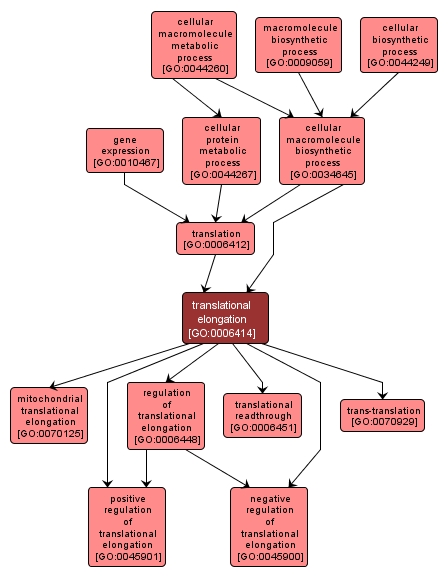GO TERM SUMMARY
|
| Name: |
translational elongation |
| Acc: |
GO:0006414 |
| Aspect: |
Biological Process |
| Desc: |
The successive addition of amino acid residues to a nascent polypeptide chain during protein biosynthesis. |
Synonyms:
- GO:0006442
- protein synthesis elongation
- GO:0006455
- translation elongation
|
|

|
INTERACTIVE GO GRAPH
|














